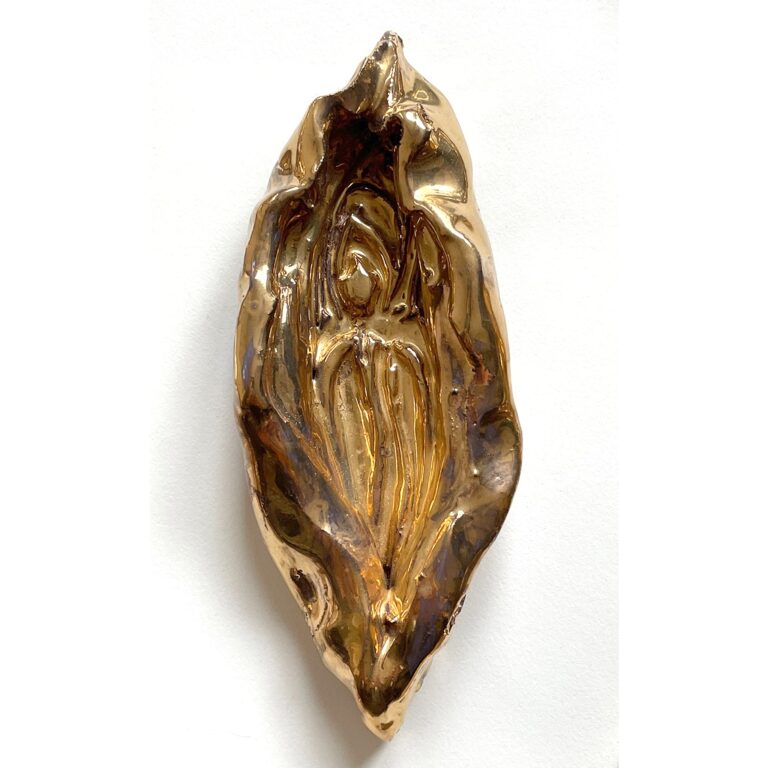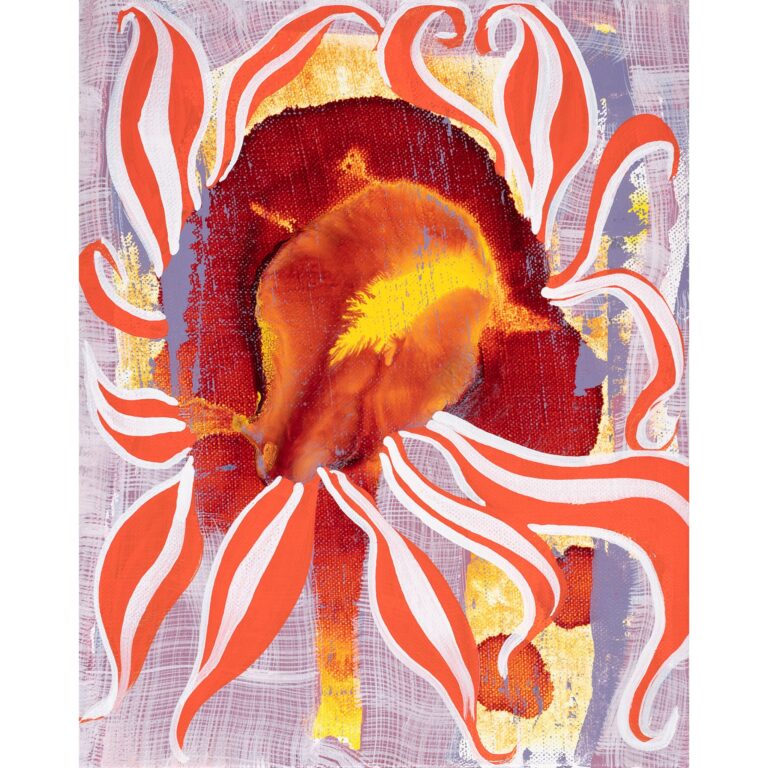Are you Clitorite?
by Margaret Jowitt
Like me, you probably know by now that, like an iceberg, most of the clitoris is hidden beneath the surface. I only found out because was a spate of pretty pink 3D clitorises on the internet which got me thinking and Googling. I found an article by a urologist who had uncovered its full extent by dissection and MRI. Helen O’Connell’s paper in the Journal of Urology (2005) was a real eye-opener, a mine of information on the anatomy of the clitoris – and the history of that anatomy showed that sometimes the textbooks are just plain wrong. I couldn’t quite work out exactly how it was positioned in the body, to be honest, I have to work hard at thinking in 3D. But I had spent many happy hours wondering quite how the human pelvis evolved from that of the common ancestor of chimps and humans (because, as everybody knows, the human pelvis makes childbirth problematic). And I had learned that the pubic arch had evolved to allow human babies to negotiate the unique ‘newly acquired’ bend in the human birth canal. (Not so newly acquired, actually the changes in the pelvis came before human heads got bigger to accommodate our burgeoning brains!) Anyway, I was primed to look closely at any structure that found itself near the pubic arch – and the clitoris hit the spot. It is actually anchored to the pubic arch by its ‘legs’ (crura) and the stalk, the bit everyone already knew about, burrowed through to the outside for easy access to solitary pleasure. The bulbs extend backwards round the vaginal opening. Earlier anatomists labelled these the vestibular bulbs but Helen O’Connell considers them part of the clitoris.
I find it a bit odd that we should have evolved to obtain more pleasure by external stimulation than by regular sex. Particularly when, according to Wikipedia (I know …) but practically everyone agrees that the sole function of the clitoris is to provide women with sexual pleasure. Unlike males, we don’t even need to orgasm to make a baby. Is pleasure really the only biological function? Well, no. Any structure that lies anywhere near the birth canal must surely be a candidate for a role in birth. Birth is the evolutionary bottleneck through which we all passed – even those of us who find vaginal orgasm elusive.
When we started to walk upright around four million years ago, the standard mammalian mating position, the male entering from behind, stopped working well. (Read Elaine Morgan, The Descent of Woman for more details) The practicalities of a vagina that was becoming inaccessible encouraged face to face mating, but the clitoris was now on the ‘wrong’ side of the vagina to be stimulated with any ease during sex. Besides, the male had ‘lost’ his penis bone (baculum) and with it the means to provide adequate stimulation. These days the happy pair are indeed fortunate if he manages to hit the G spot with any accuracy and with any regularity (or perhaps I have just been unlucky).

What might be called the main body of the clitoris lies behind (or perhaps even within) the cartilage of the pubic symphysis. A portion of this root doubles back on itself and burrows through to the mons of Venus at the apex of the pubic arch. The glans, the visible ‘button’, is at the end of this stalk. The legendary G spot now has an anatomical explanation, it corresponds to the corpus, the root of the clitoris, which is higher up behind the symphysis pubis. The nerves of the clitoris are huge, visible to the naked eye, and travel back to the sacrum. So now you know.
In my book, Dynamic Positions in Birth, (Pinter and Martin, 2014) I had speculated that the G spot might be stimulated by the back of the baby’s head on the journey down the birth canal and that this could be responsible for triggering Ferguson’s reflex. Ferguson’s reflex is a nervous signal to the hypothalamus which results in a spurt of oxytocin giving the uterus a tonic contraction which assists the mother in the final pushes for the baby to be born. (More than assist – a large enough uterine contraction can do practically all the work.) Michel Odent called this the Fetal Ejection Reflex.
In the middle of the last century, while researching stimuli for oxytocin secretion, physiologists had discovered that a spurt of oxytocin could be induced by inserting a glass rod into the vagina of rodents. There has always seemed to be a question mark over quite what was causing this, whether it was vaginal or cervical stimulation, some textbooks say the vagina, others say the cervix. Now we can assume that it must be clitoral stimulation through the vaginal wall.
And now that I knew that the G spot related to the internal clitoris, everything dropped beautifully into place. (Widespread confusion about the location of the G spot is now explained, because the clitoris is stimulated at one remove through the vaginal and urethral walls and it is not so much as a spot as an area. In fact, those who are skeptical about the very existence of the G spot can clap their hands in glee, more dissection and cellular analysis by Helen O’Connell failed to find any distinctly identifiable tissue at the area in question.)

Birth is designed to be orgasmic, the fluttering vaginal contractions of orgasm initiated by the pressure of the fetal head also help ease the baby out. The engorgement of the vestibular bulbs and the crura provide a cushion for the back of the baby’s head to protect it from the hard bones of the pubic arch. All mammals evolved to have vaginal orgasm at birth to help their offspring out. Orgasm by external stimulation during sex is an added bonus.
It says a lot for our birth culture that it has taken so long to work this out – and not just birth but male dominated science in general. It probably says even more for our birth culture that textbook physiology has absolutely nothing to say on the subject. I wonder whether all that engorgement and lubrication protects women against tearing?
In Spiritual Midwifery Ina May Gaskin makes much of what partners can do to help their women give birth – loving, smooching, cuddling and sexual stimulation. Indeed, some obstetricians stimulate the external clitoris mechanically to ease birth, which seems to me to be a gross intrusion, verging on assault. They do at least have physiology on their side – like nipple stimulation, clitoral massage releases oxytocin, but both orgasm and oxytocin secretion are shy phenomena, failing to manifest themselves in stressful environments.
A role for the clitoris in labour would make sense of so many of the things we see in birth. We might find that birth proceeds better when we adopt positions where maximal clitoral stimulation is possible, not just upright, but forward leaning, acknowledging our quadrupedal heritage. It would certainly proceed better in the same sorts of environments that facilitate sex. I cannot imagine having sex in the lithotomy position while being gazed upon by a posse of strangers. Can you?

About Margaret
Margaret Jowitt first became involved in learning how birth works as a psychologist, looking at stress hormones and uterine function. Margaret did her Masters in Mothers’ experience of birth at home and in hospital. Passionate about bringing a scientific and engineering approach to birth to rethink the outdated and erroneous obstetric model of birth (Powers, Passage, Passenger)

